The Profound Symbolism of Yab-Yum in Tibetan Buddhism
The term "Yab-Yum," which has great significance in the esoteric practices of Tibetan Buddhism, symbolizes the profound union of compassion and wisdom, a central idea in Vajrayana teachings.
Key Takeaways
- Yab-Yum is a symbolic representation of the union of male and female principles.
- It is central to tantric meditation practices in Tibetan Buddhism.
- The iconography of Yab-Yum is rich with symbolism, each element signifying deeper spiritual truths.
- Understanding Yab-Yum can enhance one's spiritual practice by emphasizing the integration of wisdom and compassion.
Introduction to Yab-Yum
Yab-Yum, meaning "father-mother" in Tibetan, is a profoundly symbolic figure primarily associated with tantric traditions. The combination of masculine and feminine energies or parts of reality, such as the passive and the active, the intelligent and the compassionate, is symbolized by this representation, which usually features a male deity in union with a female consort.
This representation has philosophical connotations and represents more than a literal or sensual portrayal. It is fundamental in integrating many facets of the human experience in the quest for enlightenment.
Symbolic Dimensions of Yab-Yum
Iconographic Elements
Yab-Yum is shown with several symbolic components that communicate tantric Buddhist teachings. Generally, the feminine form is associated with knowledge (Prajna), and the male figure with compassion and skillful tactics (Upaya). As a unit, they represent the ultimate oneness required to achieve Buddhahood.
Common Deities in Yab-Yum Iconography
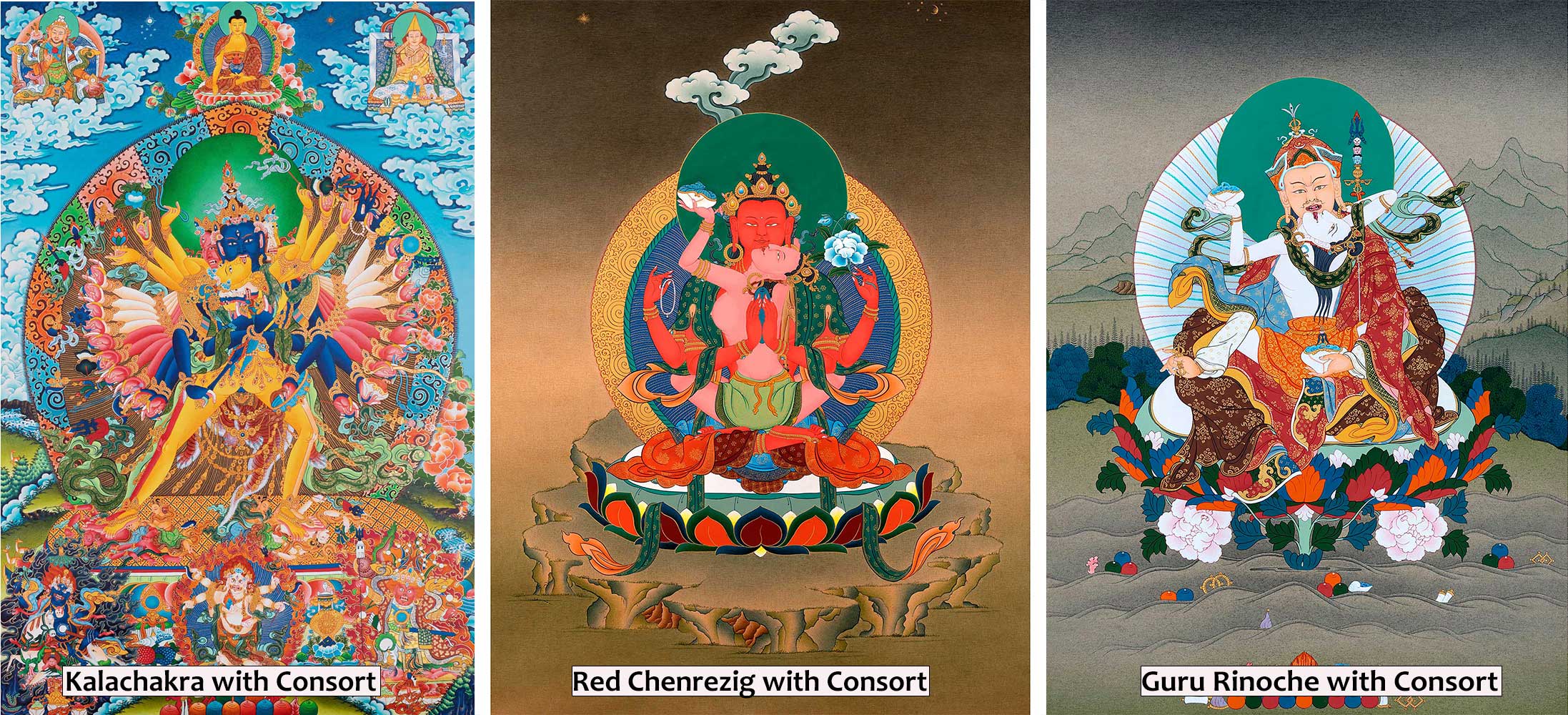
|
Male Deity |
Represents |
Female Consort |
Represents |
Union Symbolizes |
|
Chenrezig |
Compassion and skillful means |
Tara |
Active compassion and protection |
The integration of compassionate action and wisdom. |
|
Manjushri |
Transcendent wisdom |
Saraswati |
Knowledge, music, and arts |
The union of wisdom with creative and eloquent expression. |
|
Vajradhara |
The dharmakaya |
Vajradhatu Ishvari |
The wisdom of all-encompassing space |
Symbolizes the ultimate essence and non-dual reality of all Buddhas. |
|
Samantabhadra |
Primordial Buddha, unadorned awareness |
Samantabhadri |
Pure and unconditioned awareness |
Represents the primordial, innate nature of the mind. |
|
Hevajra |
Emptiness and compassion |
Nairatmya |
Non-self or no inherent existence |
Depicts the transformation of mundane into sublime wisdom. |
|
Amitabha |
Infinite light and life |
Pandaravasini |
Purity and nurturing |
Emphasizes boundlessness and the pure nature of reality. |
|
Yamantaka |
Conqueror of death and evil |
Vajravetali |
The triumph over obstacles |
Represents the ultimate victory over death and mastery over time. |
|
Padmasambhava |
Lotus-born guru, spreading Buddhism |
Yeshe Tsogyal |
Insight and concealed teachings |
Symbolizes the spreading of Dharma and enlightenment. |
|
Kalachakra |
Cycles of time and existence |
Vishvamata |
The wisdom of all phenomena |
Represents mastery over time and realization of the cycles of existence. |
|
Vajrasattva |
Purification and healing |
Dorje Nyema |
Purification and clarity |
Depicts the purification of karma and mental defilements. |
Symbolism of Union
The unity embodied in Yab-Yum transcends mere physical proximity and reaches the profound conceptual levels of tantric practice. It is a metaphor for unifying all dualities.
Significance in Tantric Practice
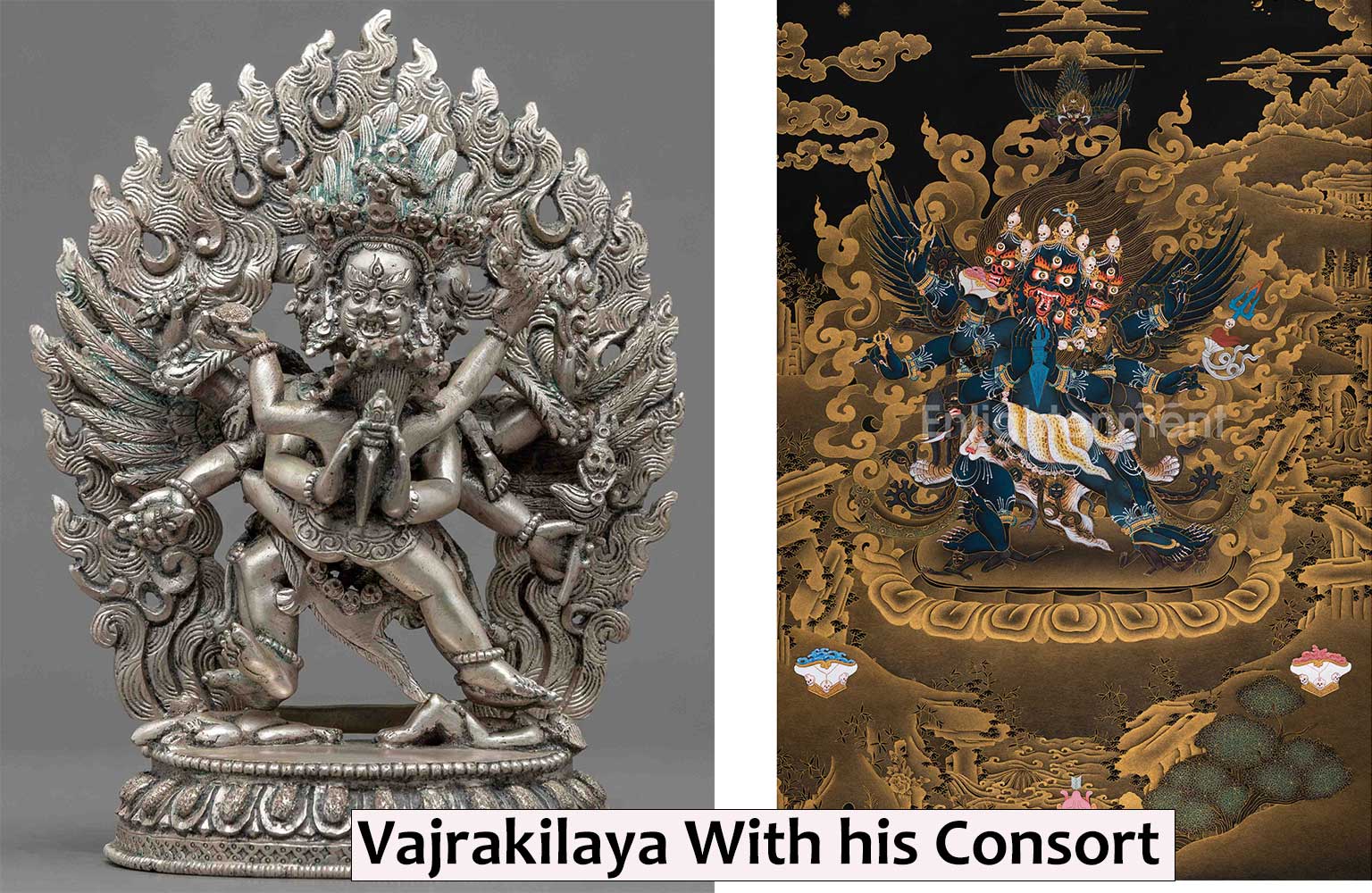
These deities are not just symbolic in tantric practice; instead, they are the embodiments of specific traits that practitioners hope to acquire. The Yab-Yum image practice entails intricate rites, meditation, and visualization exercises to link the practitioner with these divine attributes.
Realizing the non-duality of compassion and knowledge in one's mindstream is the ultimate aim, which leads to becoming a Buddha and benefiting all sentient beings.
In Vajrayana Buddhism, these deities and their consorts are essential because they offer a way for followers to interact profoundly with the teachings. Every figure and their interactions instruct and change practitioners as they progress toward enlightenment, which makes the Yab-Yum iconography a crucial component of the practice and art of Tibetan Buddhism.
Non-Duality of Samsara and Nirvana
The non-dual character of reality, where the traditional divisions between phenomena (such as samsara and nirvana, good and evil, male and female) are transcended, is another meaning of Yab-Yum iconography.
The intellectual and meditative awareness that such dualities are ultimately illusory and that these divisions cease to exist in the state of ultimate enlightenment is symbolized by the physical embrace of the male and female deities.
Integration of the Masculine and Feminine
Beyond the purely abstract concepts of compassion and knowledge, Yab-Yum also represents the fusion of feminine and male forces or attributes, a universal motif in many spiritual traditions. This equilibrium is necessary for psychological and spiritual well-being. Action, strength, and compassion are male traits; receptivity, insight, and wisdom are feminine traits.
Transformation and Enlightenment
In tantric practices, Yab-Yum imagery is frequently employed as a transformational tool. Tantric Buddhism holds that changing all facets of one's existence, including the physical, is the path to enlightenment rather than rejecting or surpassing the physical.
Therefore, practitioners can use the Yab-Yum representations as a meditation tool to assist them in merging their own material and spiritual existence into a harmonious, enlightened totality.
Sacredness of Creation and the Cosmos
Yab-Yum can also stand for the holiness of creation and the union that gives rise to life and existence in a larger cosmic perspective. This feature emphasizes that all existence is holy and that the divine is inherent in all facets of life by connecting the sign to the creative and life-giving energies of the cosmos.
Yab-Yum in Tantric Practice
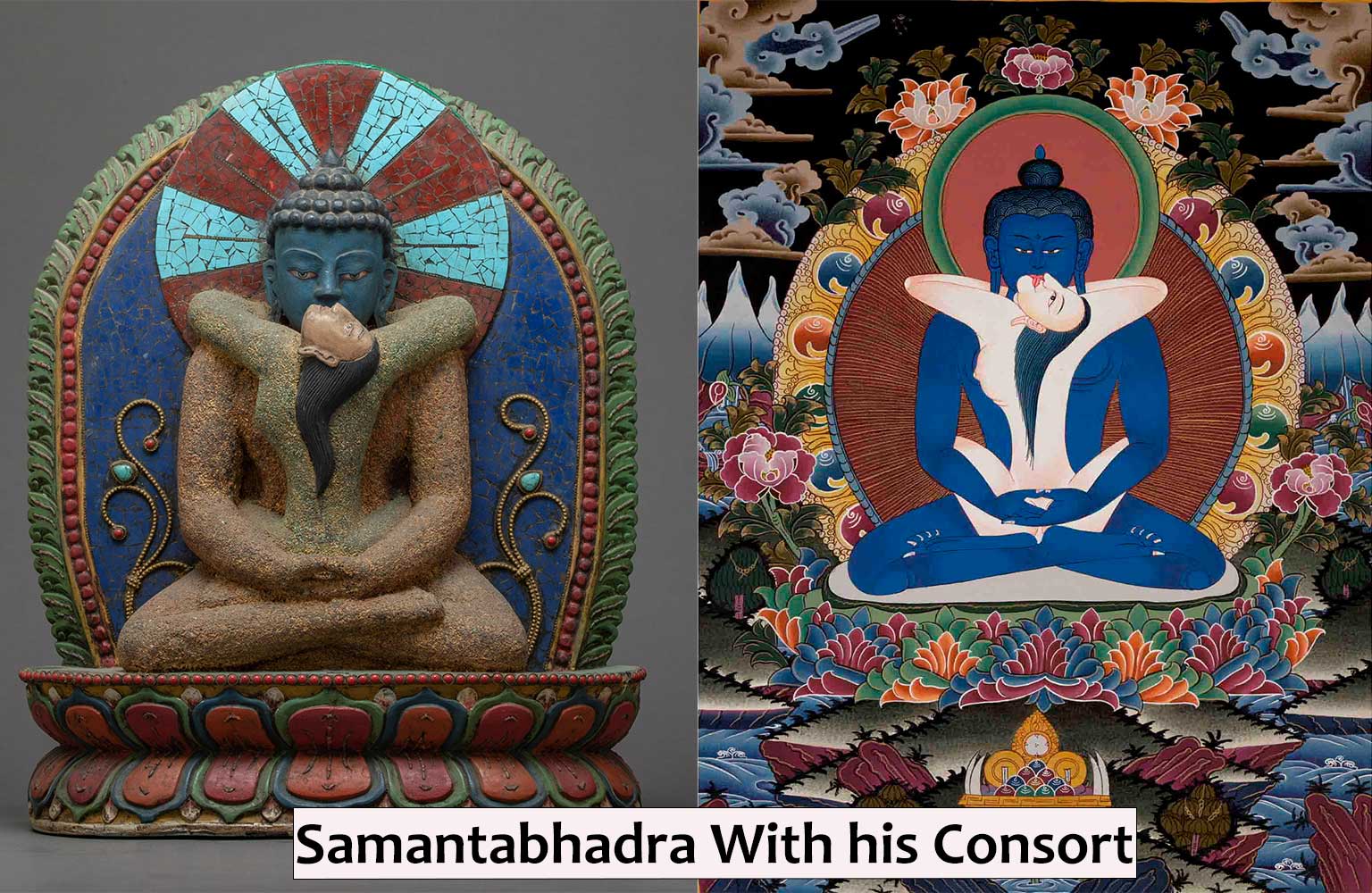
Click here to view our Samantabhara with Samantabhadri Thangka
- The Role in Meditation
Yab-Yum visualizations are used in tantric meditation techniques to cultivate the attributes that each image embodies. Practitioners concentrate on unity to absorb these attributes and go beyond common perceptions and experiences to a non-duality state.
Because of the intricacy and holiness of these meditations, this practice is often limited to advanced practitioners who have undergone certain initiations and teaching from certified instructors.
- Ritual and Ceremonial Use
Additionally, Yab-Yum figures are essential to many ceremonies and rites, which sometimes include ornate mandalas and sacrifices. The goal of these rites is to cleanse the practitioner's surroundings and psyche, fostering an atmosphere favorable to spiritual realization. Yab-Yum techniques are highly esoteric and are typically kept under wraps, discussed exclusively in the context of the guru-disciple relationship.
Cultural Impact of Yab-Yum

- Influence on Art and Architecture
With so many thangkas (traditional Tibetan scroll paintings), sculptures, and murals featuring Yab-Yum, the figure has significantly affected Himalayan and Tibetan art. These creative depictions are exquisite and provide profound spiritual value to places of worship by aiding in education and meditation.
- Perception and Interpretation
When Yab-Yum is portrayed outside of the framework of tantric practice, it might lead to misunderstandings. It's critical to see these images symbolically rather than literally or only in terms of their sexual connotations. These pictures are highly regarded in Tibetan culture and are said to represent divine truths.
In Tibetan Buddhism, Yab-Yum is much more than just an iconographic theme. It stands for the apex of tantric practitioners' theoretical and practical goals. The Yab-Yum imagery provides a striking representation of the possibility for humans to transcend conventional constraints and reach a state of total enlightenment by emulating the marriage of knowledge and compassion. Gaining insight and transforming one's spiritual path can be achieved by comprehending and reflecting on the meaning of Yab-Yum.

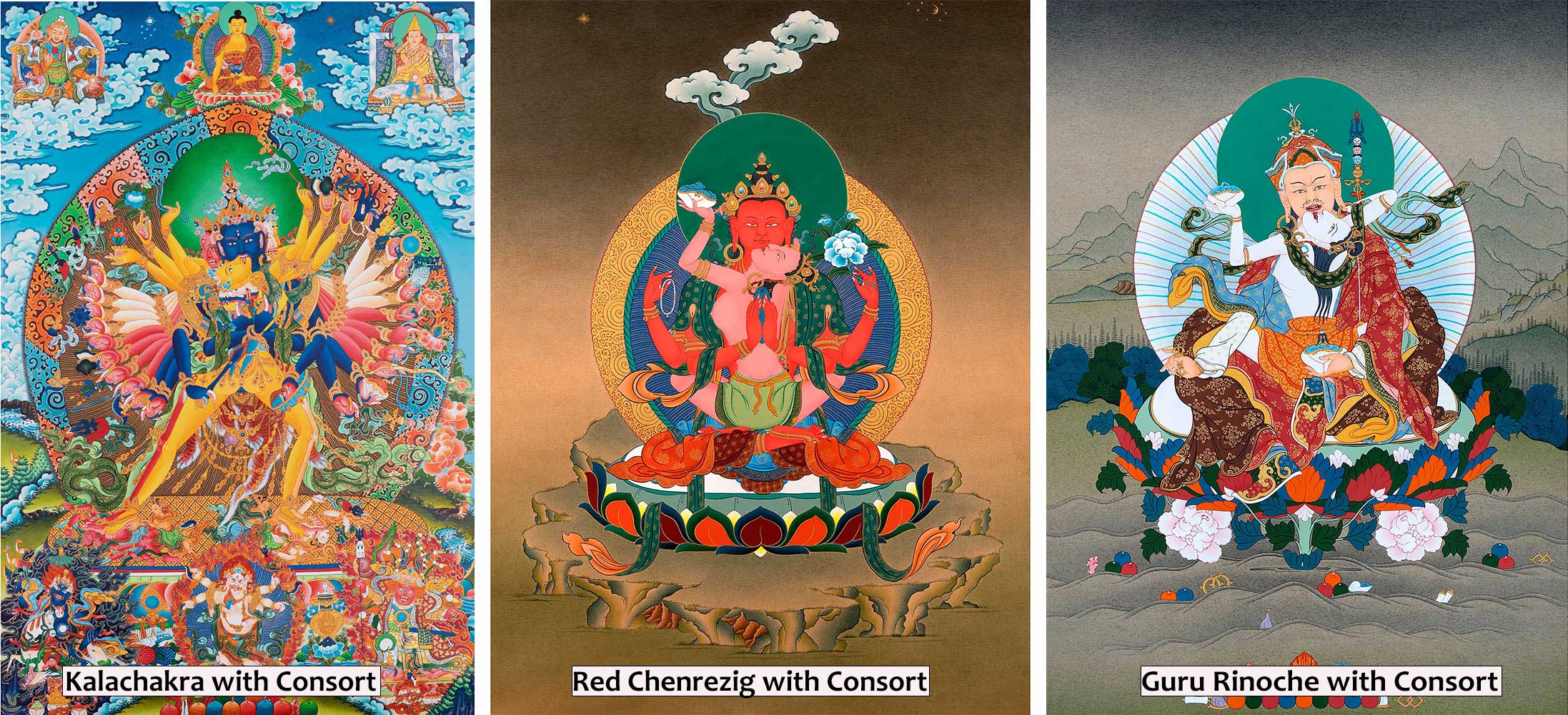
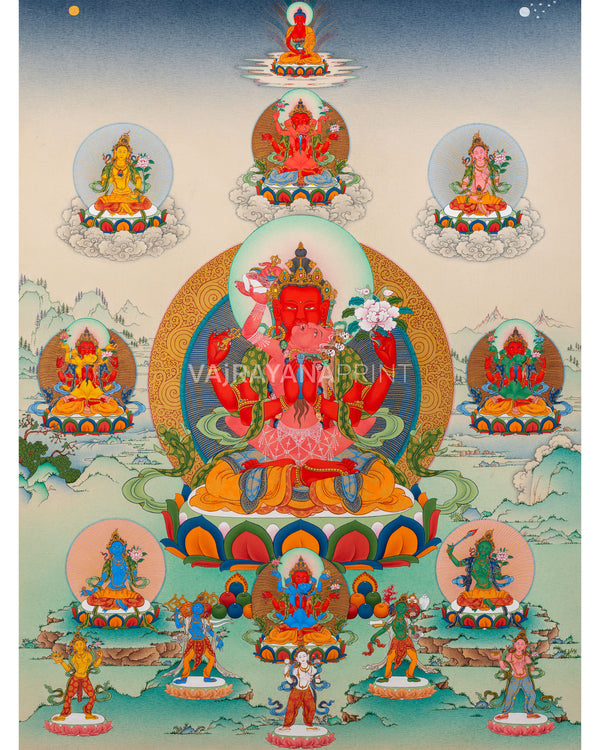
1 comment
Thubten
Fabulous article. Though for Western images a bit difficukt to comprehend. Dr jc (Phd anthtropology ) You should publish. A book?